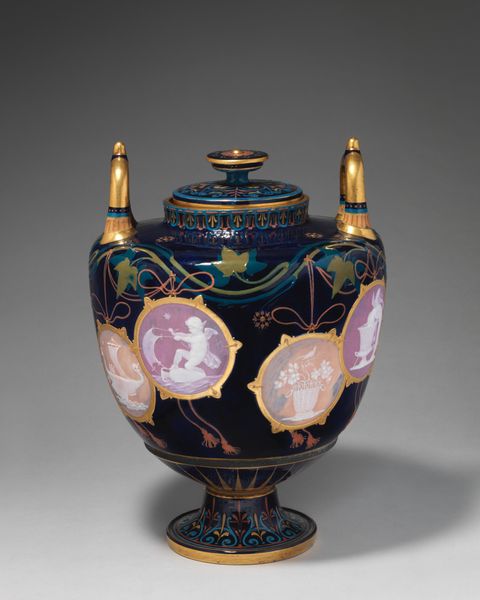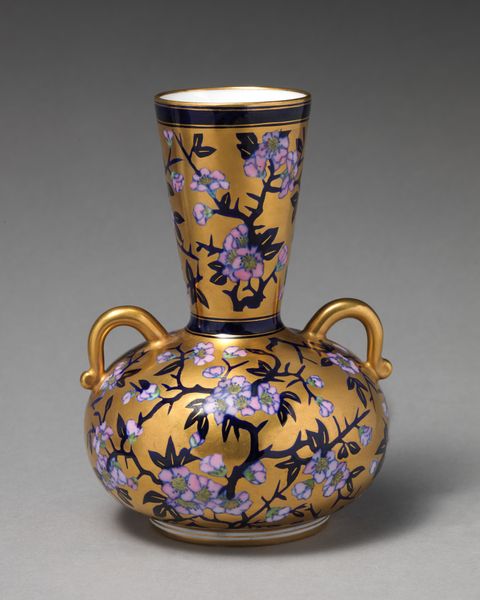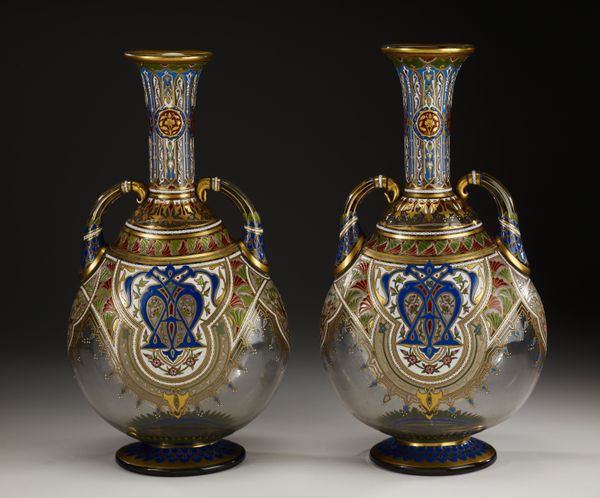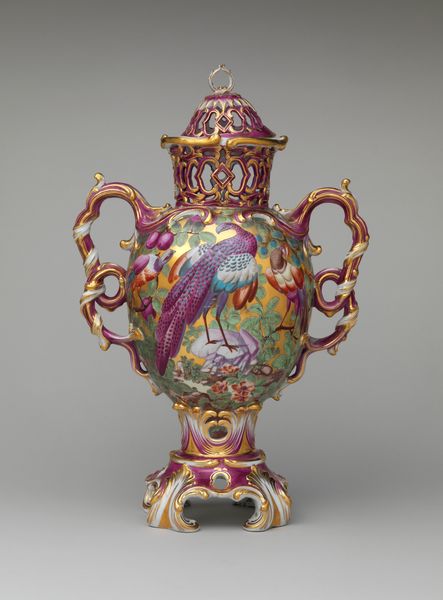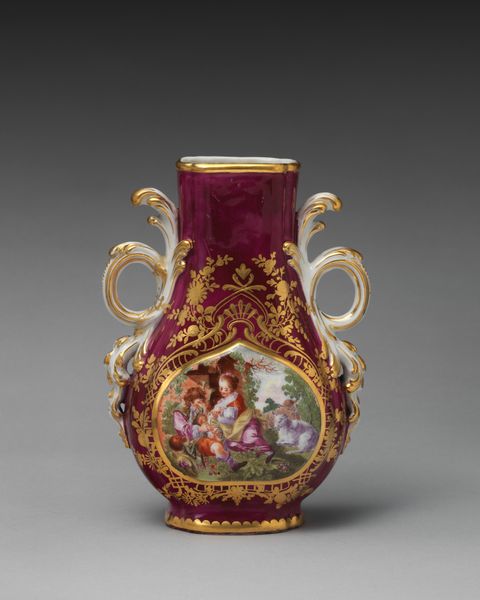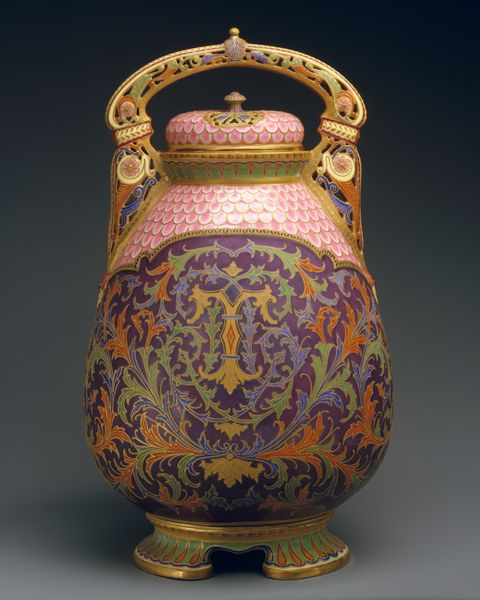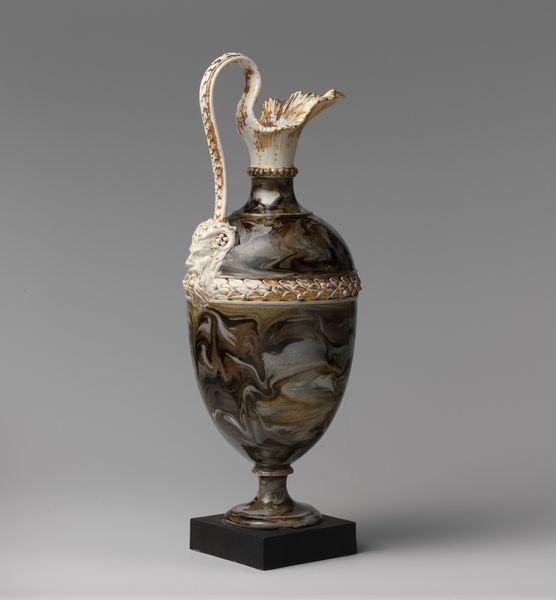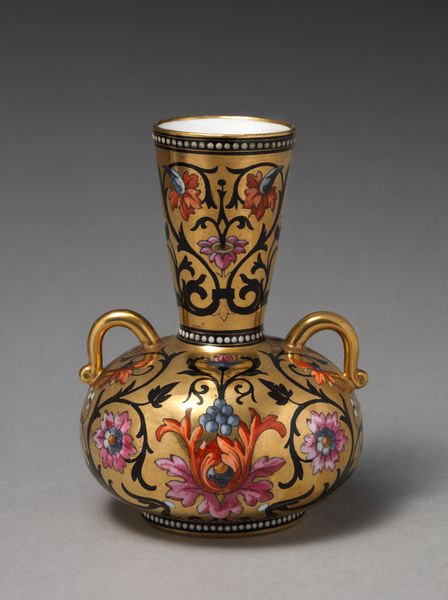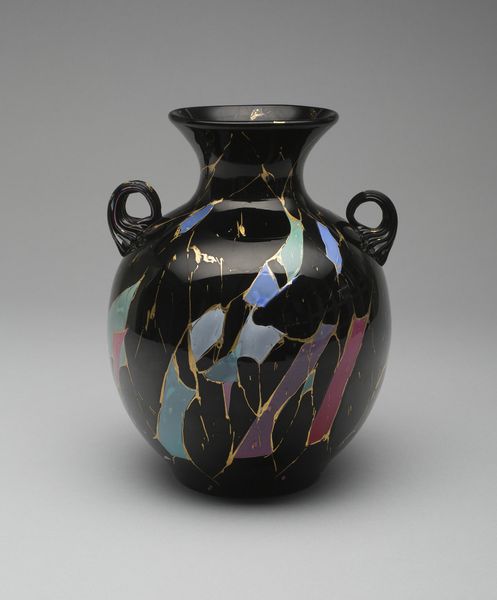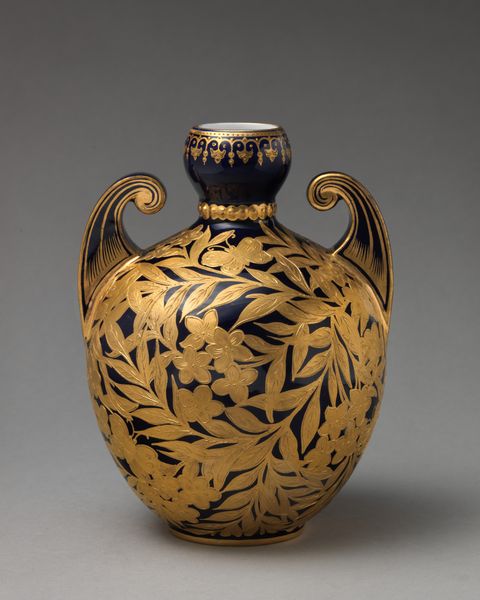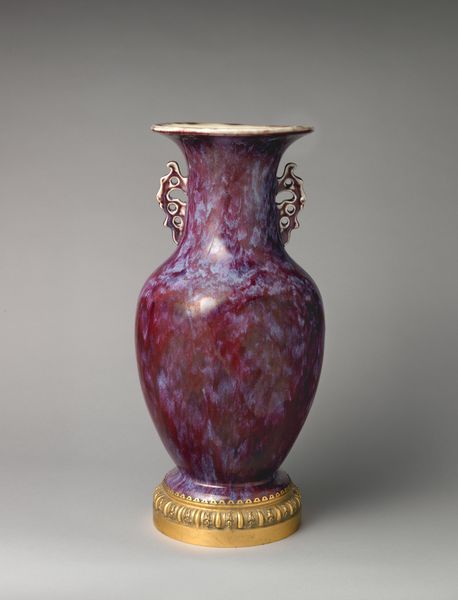
ceramic, earthenware, sculpture
#
greek-and-roman-art
#
ceramic
#
vase
#
earthenware
#
sculpture
#
ceramic
#
decorative-art
Dimensions: each 15 1/2 in. (39.4 cm)
Copyright: Public Domain
Curator: So, here we have a pair of "Pompeian" vases with covers, crafted by Minton(s) between 1869 and 1879. They’re currently residing here at the Metropolitan Museum of Art. Earthenware with ceramic decoration—what’s your first impression? Editor: Moody, in the best way! That deep cobalt blue is striking. They’ve got this ornamental, almost regal vibe but somehow feel grounded at the same time. Curator: Minton was definitely playing with historical revival here. The "Pompeian" in the name is a big clue. They are riffing on ancient Roman pottery. Editor: It's a deliberate move, of course, tapping into that fascination with classical antiquity that swept through the 19th century. I am curious about the actual labor invested in such intricate ceramic works, the mold-making, the glazing processes. Curator: Precisely. The process is meticulous, layering different glazes, firing at precise temperatures to get that jewel-like depth of color. And the motifs! Those cameo-like medallions depicting classical figures—they almost float against the dark background. What tales they could tell! Editor: Speaking of tales, I am always curious about the context these lived in. Were they purely decorative, trophies of wealth? Or did they serve a function? Because those elaborate handles and the covers do suggest some level of practical use. Curator: That's a wonderful question! They probably lived in some grand Victorian drawing room, a testament to refined taste and worldly knowledge. But given their delicate nature and ornamental complexity, display probably overshadowed everyday use. It is fascinating how an object can speak volumes about class and aspiration. Editor: And about the people actually making them! The social structures of the Minton factory and its workforce are relevant here, their specialized knowledge. Did they consider themselves artists, artisans, or laborers? Curator: It is something to think about. Their artistry speaks for itself; their vision, embedded in this timeless artifact. They crafted something that speaks of a certain time, place and yearning. Editor: Indeed. Looking beyond the aesthetic pleasures, scrutinizing material processes lets us reveal the labor and decisions embedded in every curve and glaze. Curator: Agreed. There’s beauty to be found in both appreciating the artistic creation and digging into the socioeconomic context that made these vases possible.
Comments
No comments
Be the first to comment and join the conversation on the ultimate creative platform.
